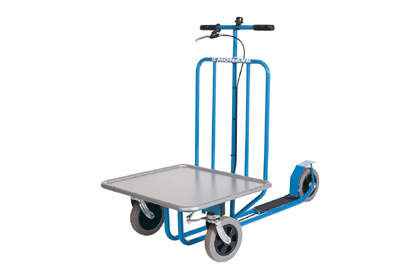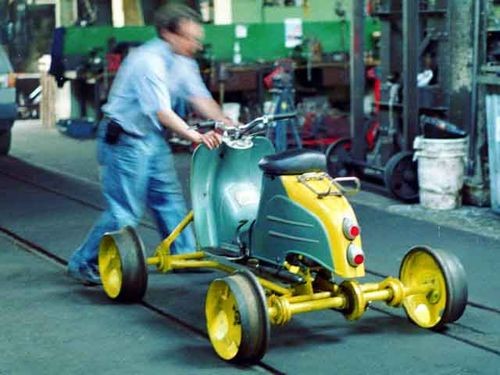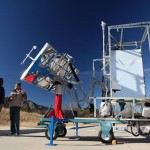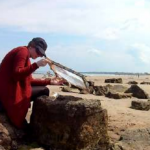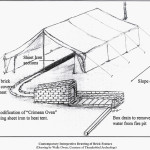 Plastics in the world of tomorrow (1944).
Plastics in the world of tomorrow (1944).
Plastics in the world of today (October 2009).
Plastics in the World of Tomorrow – Plastics in the World of Today
Kite Power
Italian company Kite Gen is building a full-scale 3 megawatt version (video) of its promising wind turbine concept, we learn from MetaEfficient. A large kite is drawn upward to altitudes around 800 metres, where average wind speeds are four times as strong as they are near ground-based wind turbines. The kites power turbines by rising and flying back to gound level continuously. The retrieval phase is said to require a small fraction of the power that is generated during the flight. A first prototype was built in 2006. One of the recent improvements is an automatic launching system, powered by fans. The technology generated an interesting discussion at the Oil Drum last summer. Previously: Floating windmills – energy from the clouds. Related: Kiteboating & Kite Aerial Photography.
Low-tech Indoor Truck
The Monark Transport kick-scooter is a fast and healthy way for staff to easily move supplies and tools around large indoor spaces. Its load capacity is 150 kg (330 lbs) and it can be equipped with a second platform level and a platform edge rim.
Streetcar Scooter
Found at the Italian Motoblog. Probably a service vehicle for trams/streetcars.
Construction in Reverse
The Panorama of Professions and Trades (1837)
What do you want to be when you grow up? In the 19th century, this question was easier to answer than it is today. There were 87 possibilities, according to Edward Hazen, author of “The Panorama of Professions and Trades” (1837). The book was also published as “Popular Technology; Professions and Trades” in 1870, Part 1 and Part 2 – these are better scans. Every profession is explained and illustrated. Find the table of contents below. Via Doug Berch, musician and dulcimer maker.
